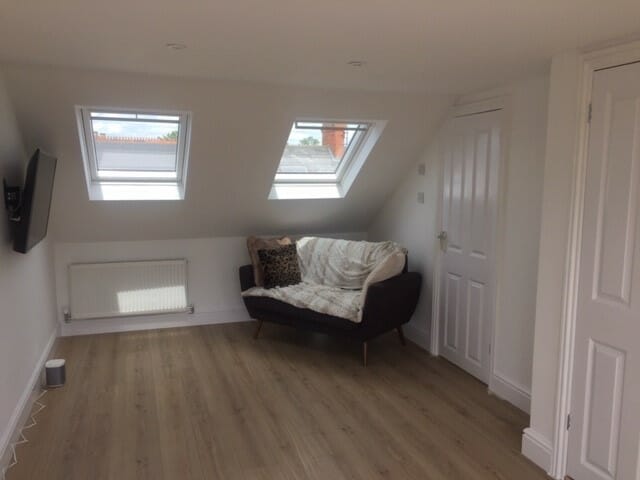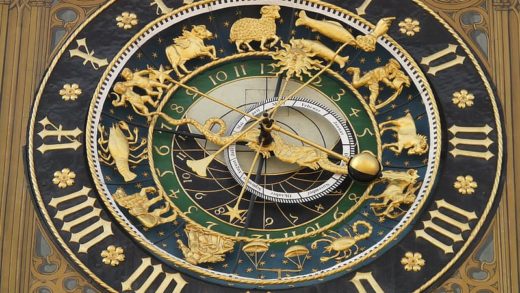A loft conversion can transform an underutilized attic space into a functional and inviting part of your home, offering everything from a cozy bedroom to an inspiring office. One popular addition to this home improvement project is the ensuite bathroom, which offers increased convenience and privacy. However, while the appeal of an ensuite is undeniable, it’s important to weigh both the advantages and potential drawbacks before committing to the investment.
In this post, we’ll explore the pros and cons of adding an ensuite to your loft conversion to help you make an informed decision. Are you looking for more information regarding loft conversions? then visit https://loftconversion.london/ to learn more.
Pros of Adding an Ensuite to Your Loft Conversion
1. Increased Property Value
One of the primary reasons homeowners consider adding an ensuite to their loft conversion is the potential for increasing their property’s value. Homes with multiple bathrooms, especially those attached to bedrooms, often command a higher price in the housing market. In fact, adding an ensuite can make your home more attractive to potential buyers, especially families and professionals who value privacy and convenience.
A loft conversion with an ensuite can elevate a home from a two-bedroom, one-bathroom property to a three-bedroom, two-bathroom setup. This can not only boost your property’s market value but also significantly widen the pool of potential buyers when the time comes to sell.
2. Added Convenience and Privacy
Convenience is one of the most obvious advantages of having an ensuite in your loft conversion. For those using the loft as a bedroom, not having to trek to a different floor for nighttime bathroom visits can be a game-changer. If your household is busy with multiple occupants, having an extra bathroom in the loft can alleviate the morning rush and reduce the pressure on existing bathrooms.
Additionally, an ensuite offers a degree of privacy that a shared bathroom cannot. Whether it’s for guests, older children, or even a home office that requires privacy, an ensuite can provide the comfort of a self-contained space.
3. Efficient Use of Space
Adding an ensuite to your loft conversion maximizes the usable space in your home. Since lofts can sometimes have awkward layouts due to sloping roofs or irregular shapes, transforming part of the area into a compact ensuite can make effective use of space that might otherwise be wasted. Modern design solutions, like space-saving fixtures and fittings, can help ensure that even a small ensuite feels comfortable and functional.
4. Enhanced Comfort and Luxury
An ensuite can be a practical upgrade, but it also adds a touch of luxury. Imagine transforming your loft into a serene master bedroom complete with a sleek, modern bathroom—a perfect retreat after a long day. Whether you opt for a minimalist design or a spa-like atmosphere, an ensuite can elevate the overall experience of living in your home. For guests, having a private bathroom can also feel more hospitable, adding a layer of comfort to their stay.
5. Adaptability for Future Needs
Adding an ensuite in the loft also opens up possibilities for future use. For example, if you or a family member needs to age in place, having an additional bathroom on a different floor could prove invaluable. Alternatively, the loft could be turned into an independent space for older children or even rented out as a self-contained studio in the future.

Cons of Adding an Ensuite to Your Loft Conversion
1. Cost Implications
One of the biggest drawbacks of adding an ensuite to your loft conversion is the cost. Plumbing, waterproofing, tiling, and installing fixtures all add to the overall expense of the project. Depending on the size of the space and the complexity of the installation, the cost of adding an ensuite can significantly exceed the cost of the loft conversion itself.
You’ll also need to consider the cost of structural changes. If your loft isn’t already fitted for plumbing, you may need to reroute pipes, which can require additional labor and material costs. Plus, unforeseen issues like old plumbing systems or weak flooring can lead to unexpected expenses.
2. Space Constraints
While an ensuite is a great way to add convenience, it can eat into valuable floor space in your loft. Lofts typically have smaller and less regular layouts, with sloping ceilings and awkward corners. Depending on the size of your loft, adding an ensuite might mean sacrificing space that could otherwise be used for a more spacious bedroom or storage area.
It’s essential to ensure that adding an ensuite won’t compromise the overall comfort and functionality of your loft. If you’re planning on using the loft for multiple purposes, such as a bedroom and workspace, make sure there’s enough room for both the ensuite and the primary living space to coexist harmoniously.
3. Potential for Complicated Plumbing
Not all homes are built with plumbing systems designed to accommodate additional bathrooms, especially in loft spaces. The higher elevation of a loft may pose challenges in connecting the ensuite to your home’s existing plumbing system, particularly for waste pipes that rely on gravity for drainage.
In some cases, installing an ensuite in the loft could require expensive work to ensure proper water pressure and drainage. For example, you might need to install a pump system to facilitate efficient water flow. Additionally, poor planning or subpar installation could lead to ongoing issues like slow drainage or leaks, which can be both costly and frustrating to fix.
4. Potential for Overdevelopment
Another concern is the risk of overdeveloping your home. While an ensuite can increase the value of your property, adding too many bathrooms relative to the number of bedrooms could have the opposite effect. If your home already has multiple bathrooms, adding another one may not provide the same return on investment. It’s important to assess whether an ensuite will genuinely enhance your property or if it might be seen as excessive by future buyers.
5. Impact on Ventilation and Moisture Control
Bathrooms produce a lot of moisture, and in loft spaces, where ventilation may already be limited, this can lead to issues like condensation, damp, or mold growth. Proper ventilation is crucial to maintaining a healthy and comfortable environment in your ensuite, and this often means installing an extractor fan or even adding skylights to increase airflow.
However, improving ventilation might come with its own set of challenges. For example, installing skylights could complicate the roofline or interfere with the aesthetic of the loft. Without proper moisture control, you risk damaging not just the ensuite but the entire loft area.
Conclusion
Adding an ensuite to your loft conversion can certainly enhance your home, offering increased convenience, privacy, and property value. It’s a desirable feature that can make your loft more functional and adaptable for various uses. However, it also comes with significant costs, space considerations, and potential plumbing complications.
Before making a decision, carefully assess the size of your loft, your budget, and your long-term plans for your home. Consulting with a professional architect or builder can help you determine whether adding an ensuite is a feasible and worthwhile investment. Ultimately, the decision will depend on balancing your personal preferences with the practicalities of the space and the potential return on investment.
By weighing the pros and cons, you can ensure that your loft conversion meets both your current needs and any future possibilities for your home.










